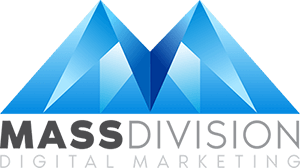Lead Generation PPC Case Study
Goal: Optimizing for lead generation at the lowest cost per lead while reducing ad spend to a more manageable amount.
Overview: In this PPC Study Case we will take an existing campaign that was managed by a competitor agency. After rebuilding the campaign, we were able to drop the cost per lead by 75% saving them thousands of dollars monthly in ad spend while maintaining their lead generation.

Background
The client had been working with the other marketing agency for around a year. When he would ask for more lead volume, the first recommendation that was made was to increase the budget. The campaign originally started at around $6,000 a month which was the clients ad spend budget and eventually grew to almost $17,000 per month in ad spend which was not sustainable for the business owner. The kicker here is that the marketing firm charged him based on a percentage of ad spend in addition to a management fee. So he was spending more money on ad spend, and also spending more to have his ads managed. Being the savvy businessman that he was, he decided that he needed another opinion.
After talking to the client we got a good understanding of his goals. He wanted to drive as many leads as possible within his ad spend budget.
The Audit
Google Ads is one of the most powerful advertising platforms in the world. It has also grown to be one of the most complexes. Google’s #1 goal is to get as much money from you as possible without any real promise of an ROI. However, that is where we come in.
We started by performing an audit of the account. At Mass Division we have done many of these audits and created a checklist as we work through the account.
- We look at current data for trends and insights. What has worked and what has not?
- We look for mistakes in the account that can lead to poor conversions.
Pretty much 100% of the time we find opportunities that can be improved. Sometimes minor adjustments or changes are enough, but other times things need to be reworked from the ground up.
Below is the data from the last month of the campaign under the previous marketing company.

- Cost: $16,800 Per Month (at the end)
- Conversion Rate: 4.63%
- Conversions: 974 (at the end)
- Cost Per Lead: $17.20
The Work
Keywords
The keywords were beyond extensive. There were many very broad keywords that were soaking up a lot of budgets but not generating leads. There were many keywords that had low to no traffic at all. There were some keepers in there, but this keyword list definitely needed some optimization. We did some keyword research using both our own Keyword tool and Google’s Keyword Planner and selected keywords that were more lower funnel. This means people who were searching in a way that reflected they were more ready to make a purchase.
There was no blacklist in place so many irrelevant searches were making associations against the previous keyword list. Thankfully we had a lot of data and were able to compile a good negative targeting list to help prevent wasted ad spend and increase the efficiency of the campaign.
Ads
In Google Ads, ad groups have sets of keywords that are being bid on, and then the ad copy that will be displayed when people search for those keywords. When a user searches for a specific keyword, they are asking a question and looking for a specific solution.
If a very broad or generic ad is presented, it will not be presenting the solution that the searcher is looking for and thus the Click Through Rate or CTR will be low. As a result of this, costs will increase due to the lower relevancy score.
When we did our initial evaluation, we found that the ads were generic and plain. They did not embody the business or deliver an answer to the question the searcher was asking. This was a big opportunity for improvement.
We created all new ads with fresh headlines and descriptions that included specific seed keywords. You do not want to search for a “puppy” and see an ad for a “kitten”. It is not relevant to the search that is being made and will not generate a lot of traffic. This change also increased the ad relevance score and click through rate.
Extensions
The extensions on this account were lacking. There were no site link extensions, no call out extensions, no structured snippets, and the location extension was not integrated. There was a lot of opportunity in this section alone. We added any and all extensions that made sense for this business.
Sitelinks are a fantastic way to offer alternative links that may help searchers find what they are looking for. Callout Extensions are great to highlight specific things about your business, products, process, and more that puts you above your competitors. Structured snippets are wonderful to provide insight into your products, offerings, and more. Location extensions are a great way to tie your Google My Business profile to your ads account and which in turn places your address, phone number, and a map marker.
All of these extensions help ads perform better. It increases the real estate of the ad which is always a good thing. It offers the searcher more information which can help attract them to click on the ad and thus bring them through to your business. In the case of the location extension, it can also help bring people into your brick and mortar locations.
Targeting
The original campaign was targeting a 10-mile radius around the location of the store. This is a prime area for targeting, but it is very limiting in terms of reach and available impressions. Traditionally, a very close radius to a brick and mortar store will yield very good results. However in the case of this business, people were willing to travel much further.
Using 10-mile increments, we increased the targeting radius to 40 miles and watched to see if people were willing to drive that far. We were pleased to see that people were sending inquiries in from as far as 30 miles away. We were getting inquiries and people traveling from 40 miles, but it was much less often. It seemed that 30 miles was the sweet spot. Having done this, we opened up a whole new source of ad inventory for this client’s advertisements.
The Results
- Cost: $6,000 Per Month ($200 per day)
- Conversion Rate: 7.5%
- Conversions: 1,390
- Cost Per Lead: $4.38
Conclusion
The client was very pleased. We were able to reduce the cost per lead by 75% maintaining and even slightly improving how many average leads were generated monthly, while reducing ad spend cost by over $10,000 a month. This allowed the client to re-invest this money back into his business.
This was accomplished by doing keyword research for recent data on search keyword trends. Putting in place a solid blacklist to ensure that Google does not make irrelevant associations. Creating high converting ad copy with a variety of for google to serve and optimize with. Building out the ad extensions portfolio to increase information presented to the searcher and increase ad real estate. Increasing the targeting radius to increase the pool of potential customers.
When the client is ready to scale to more volume, we can help him do so, all while maintaining a healthy cost per lead.

